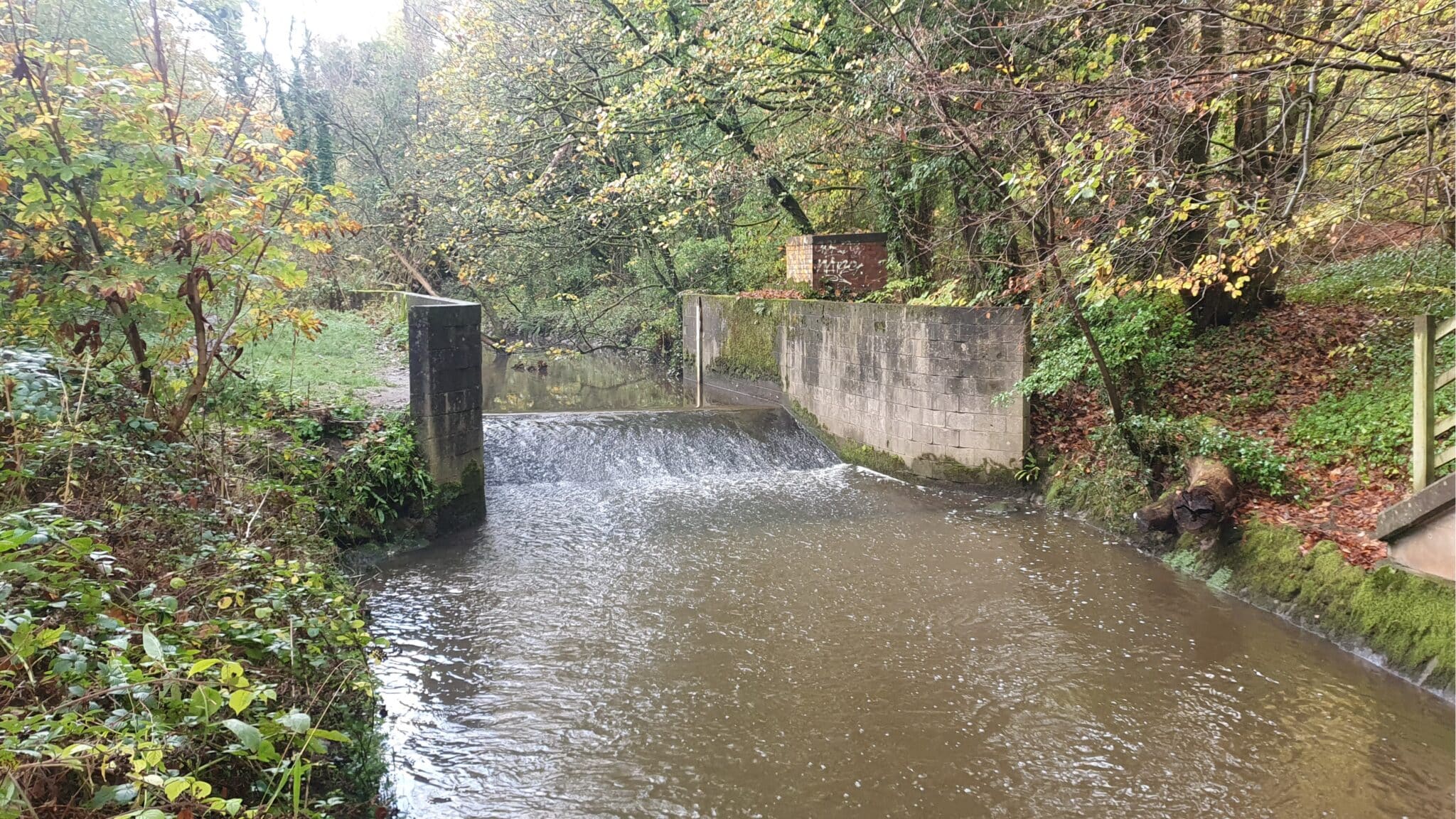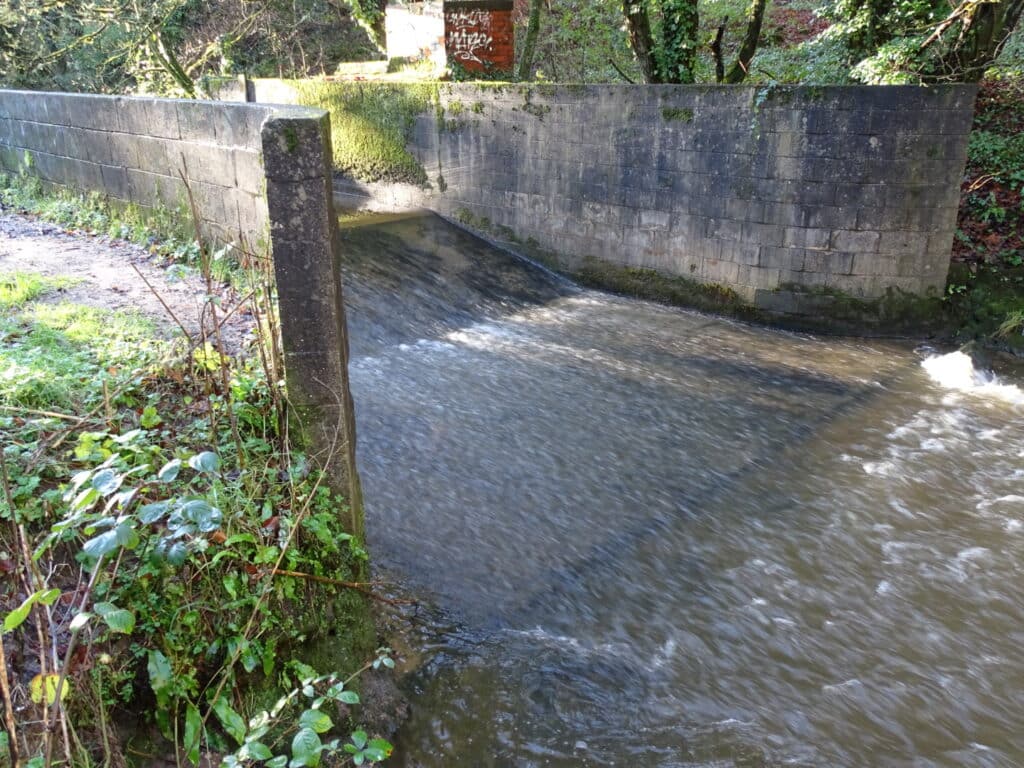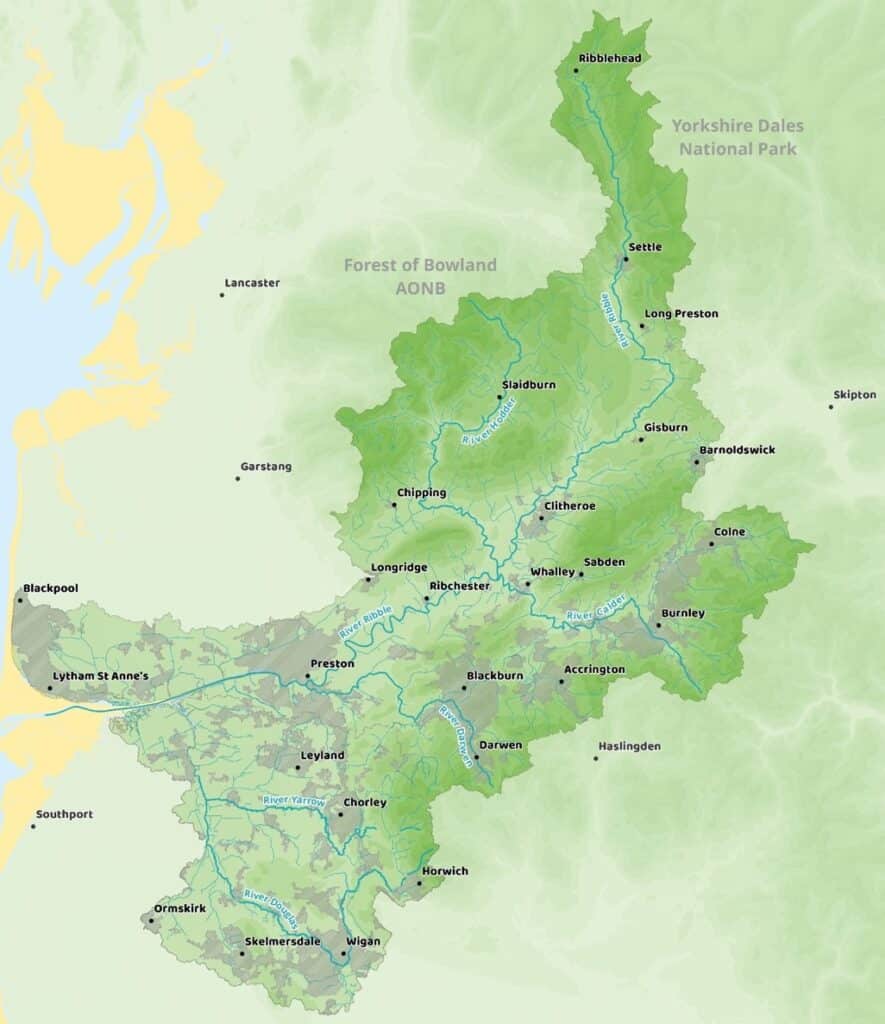
Cobbs Clough Weir
Work has started on Cobbs Clough weir on the River Tawd. Cobbs Clough is the last of eight weirs that we’re removing as part of the Our Douglas project.
It is thought that the Cobbs Clough weir is an old water gauging station. Whatever it’s original purpose, this 7-meter brick and concrete weir is now proving to be a barrier to fish migration. In fact, when we’ve been visiting the site, we’ve found numerous chub at the bottom of the weir, unable to pass and continue up the river.
So, for this project, we’re going to completely remove the weir! This will help fish migrate up and down the River Tawd, improve habitat connectivity for other species, re-naturalise the river, and allow natural processes, such as sediment transportation, to take place.
Why is fish migration so important?

Fish need to move up and down rivers to feed, breed, and find shelter. As the name suggests migratory fish like Atlantic salmon, brown trout, and European eels all make huge journeys from rivers to the sea and back again. In order to do this, they need to be able to move upstream and downstream.
However, manmade barriers like weirs are obstacles that fish can’t pass. This is usually because the barrier is too tall or too steep. Even when they can be passed, they take up valuable energy that many fish simply don’t have when they’re at this stage of their migratory journey.
Even non migratory fish still need to move up and down stream so that they can find new food sources or escape from issues such as floods, heat waves, droughts, pollution incidents or predators.
Perhaps most importantly, all fish need to travel around the river to find suitable breeding partners and spawning habitats. Without this, they cannot reproduce, and fish numbers will decline. The ones that do manage to reproduce only have access to a smaller gene pool, which can have a severe impact on genetic diversity.
About the Our Douglas project
Opening Up the River (OUR) Douglas Project is the first major project the Ribble Rivers Trust will deliver on the River Douglas Catchment. The project aims to create a healthier river environment by improving fish passage between Gathurst and Horwich. Ribble Rivers Trust are delivering this project with our partner Groundwork Cheshire, Lancashire and Merseyside. Groundwork are hosts for the Douglas Catchment Partnership, who act as the Steering Group for the project.
The £949,454 project is receiving £505,828 from the Ministry for Housing Communities and Local Government, through the European Regional Development Fund, £387,347 from delivery partner Groundwork Cheshire, Lancashire and Merseyside, as well as charitable funding from Ribble Rivers Trust.
The project will achieve its aims through reconnecting river habitat. When a habitat is disconnected and animals, in our case fish, are prevented from moving to different areas to feed, breed, and find new habitats. This prevents them from reproducing, limits their gene pool, stops them from moving to new and potentially better habitats, and means that they cannot access plentiful food sources.
By reconnecting rivers and removing barriers we will see a river environment that will support greater abundance and diversity of fish, invertebrates, bird and mammals.
Through improving one of the major rivers within Lancashire’s unique landscape the project aims to also raise awareness of the river and its biodiversity. Plus, the enhanced blue space will benefit people as well as wildlife.


